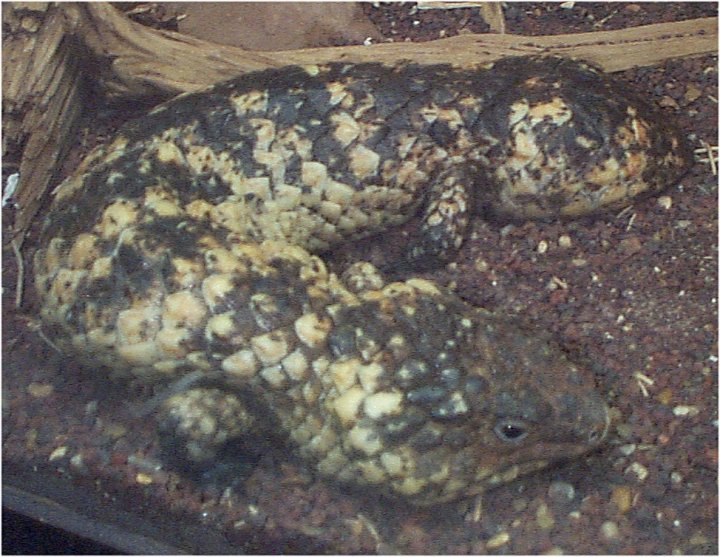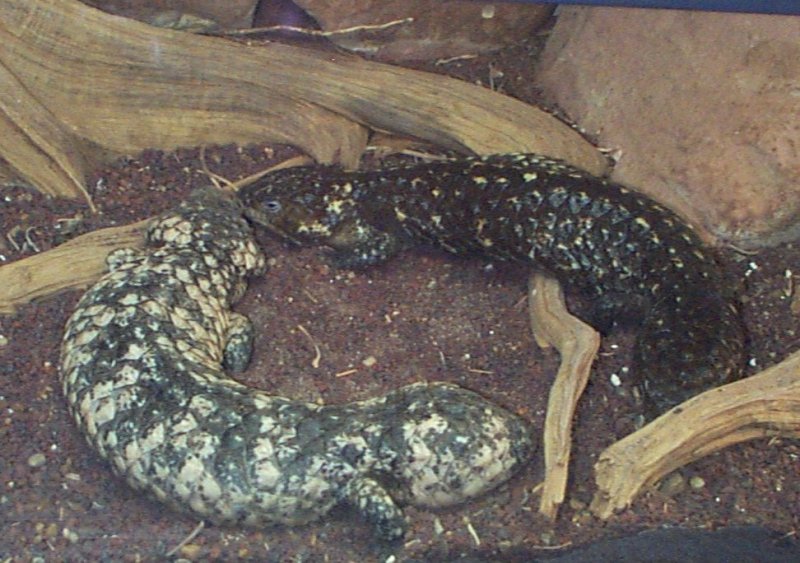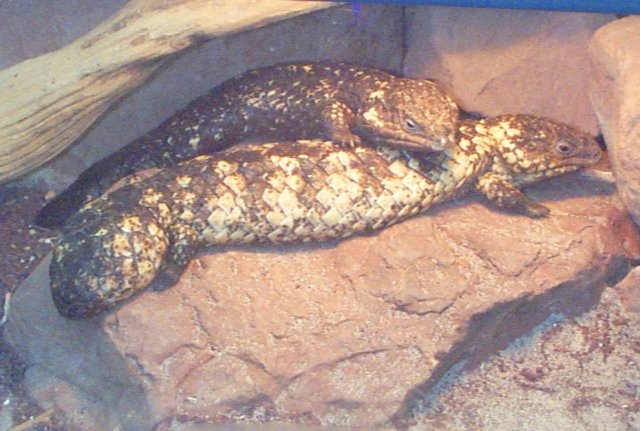

|
|
|
 |
Scientific Name: Tiliqua rugosus |
| Geographical Range: Southern Australia | |
| Habitat: Desert grasslands and dunes | |
| Diet in the Wild:Omnivorous, including insects, other arthropods, snails, fruits and flowers. | |
| Conservation Status: Not protected. | |
| Location in the Zoo: Herpetarium | |
|
|
|
|
Physical Description: |
Special
Adaptations: These lizards are very lethargic and slow moving. They will often bask in the sun on roads, and since they are slow they usually get ran over by cars. They are usually active during the heat of the day or midday. They usually eat plant food than animals, but their teeth are large and have strong jaw muscles to break snails' shells and beetles. They use their sight in individual identication, as well as in prey identification. They also have a keen sense of smell. They can use it to identify other species, sex, and sexual receptivity of the females. When they know danger is coming or around they will put itself in an arc and will stick out its blue tounge through the reddish brim of his mouth while hissing. They will rarely bite so this is a way to try and scare off the threat. Althogh it is slow, it can run pretty quickly if there is an emergency. |
|
Reproductive Behavior: Mating seasons usually begins in September to November.
This is also when the males become more aggressive. They use thier
sight to choose their mate. The Females usually have scars from the
males teeth during mating season so it is very rough. These
lizards form long term pair bonds. Sometimes the same pairs will mate
with each other for more years. The Females will give birth between
December and April. They can breed every year as long as they have
enough food. When the babies arrive, they usually eat the placental
membrane that is around them. Within a couple of day they will shed
their skin and they will be able to leave. These babies are big babies
when they are born, usually they are about 220 mm and 200g. Females
give birth to two or three babies, rarely one. |
 |
| Social
Organization:: Solitary, Family Groups, Communities?  |
The Animal at the Zoo: |
 |
Sources and Links: Honolulu Zoo. Shingleback Skink. URL: http://www.honoluluzoo.org/shingleback_skink.htmCool Companions. Shingleback Skink. URL: http://www.coolcompanions.com.au./factsheets/shingle.html Grzimek's Animal Life Encyclopedia. Volume 6, Reptiles, edied by DR. DR. H.C. Bernhard Grzimek. New York, NY: Van Nostrand Reinhold Company, 1975 Grzimek's Animal Life Encyclopedia, Second edition. Volume 7, Reptiles, edited by Michael Hutchins, James B. Murphy, and Neil Schlager. Farmington Hills, Mi: Gale Group, 2003 Austrailan Museum On-line. Blue-tongued Lizards in New South Wales.URL: http://www.austmus.gov.au/factsheets/blue_tongue_lizard.htm. 2003 |
WhoZoo Animal
Index
Reptiles and Amphibians at
the Fort Worth Zoo